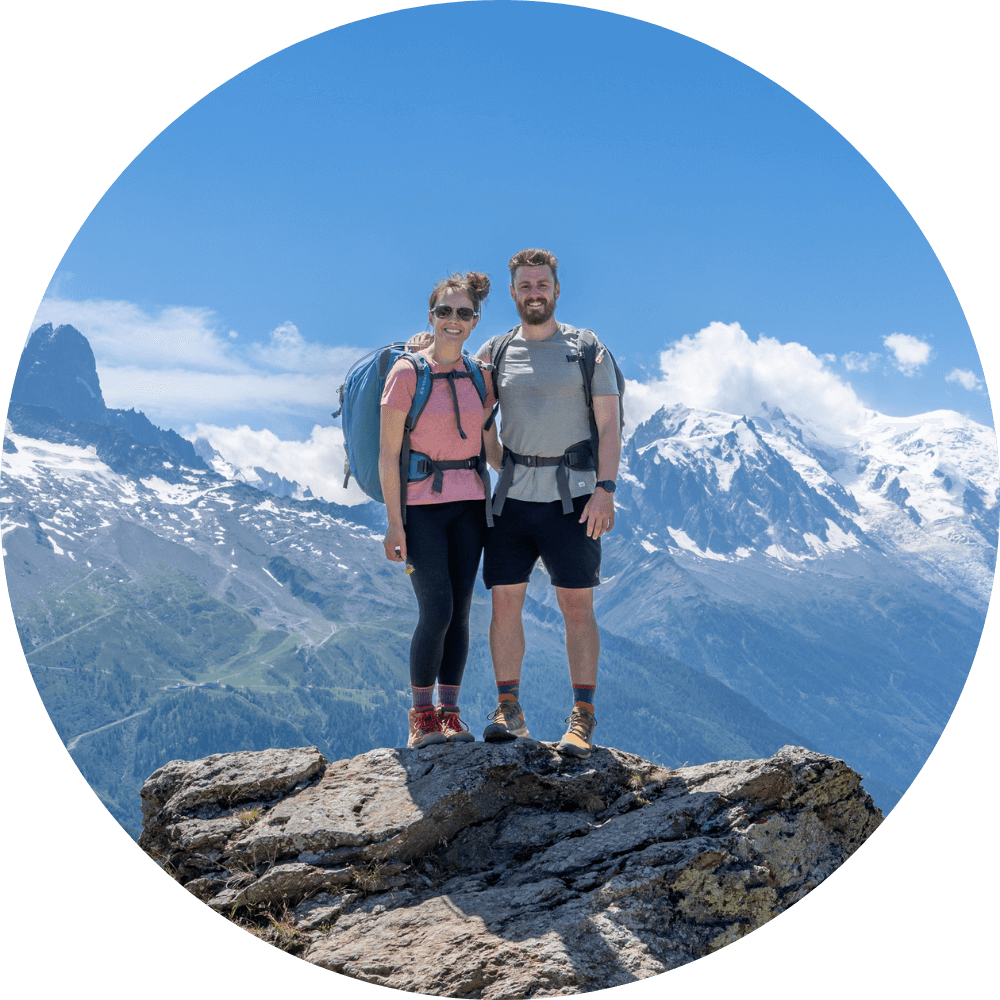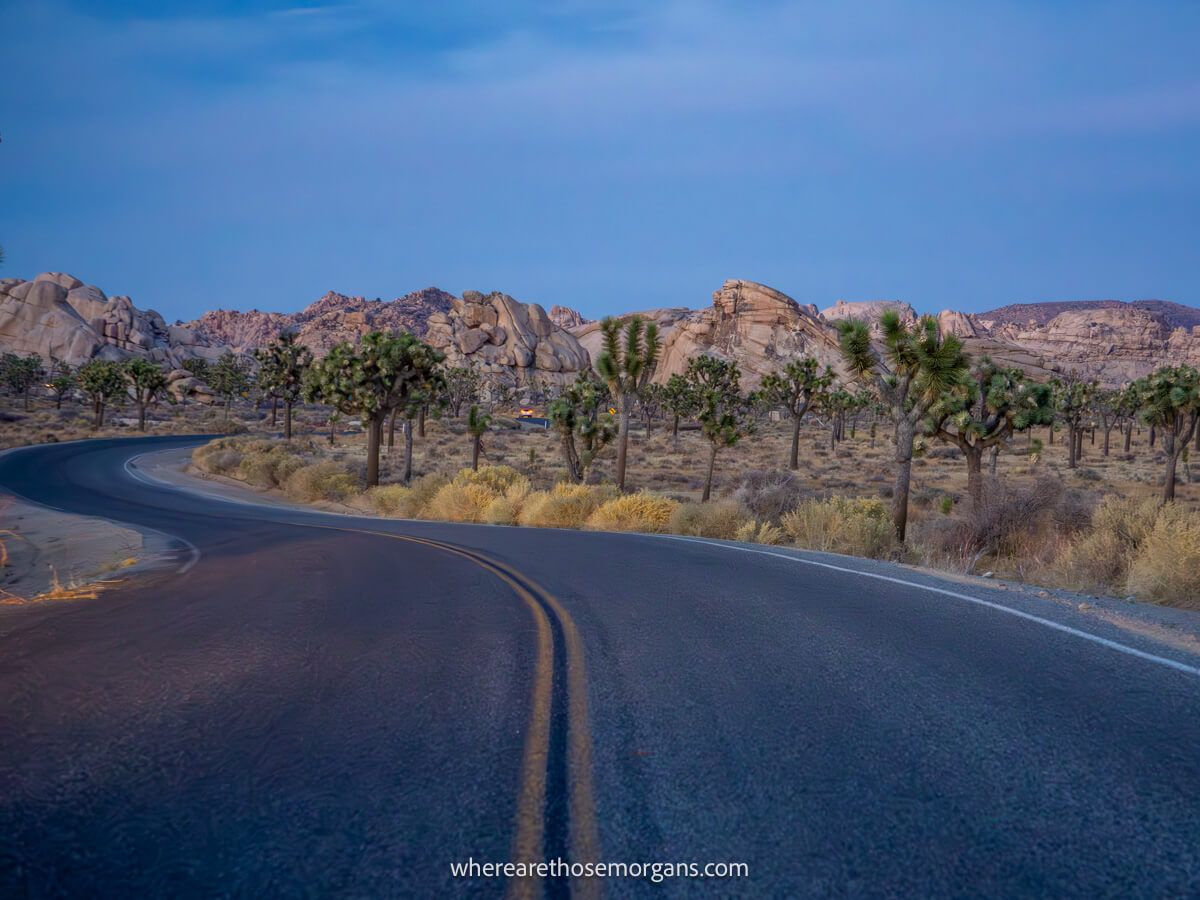Taking a road trip can be equal parts exciting and overwhelming, we’ve done enough to know! But one thing it really shouldn’t be? Difficult. If you’re a serial planner like us and you don’t feel like you’re quite there with your plans just yet, we’re going to help take away some of that road trip planning stress.
In this guide we share our tried and tested step-by-step guide on how to plan the perfect road trip. We want to help you prepare, save money and enjoy every minute of your time on the road. Read more about us.
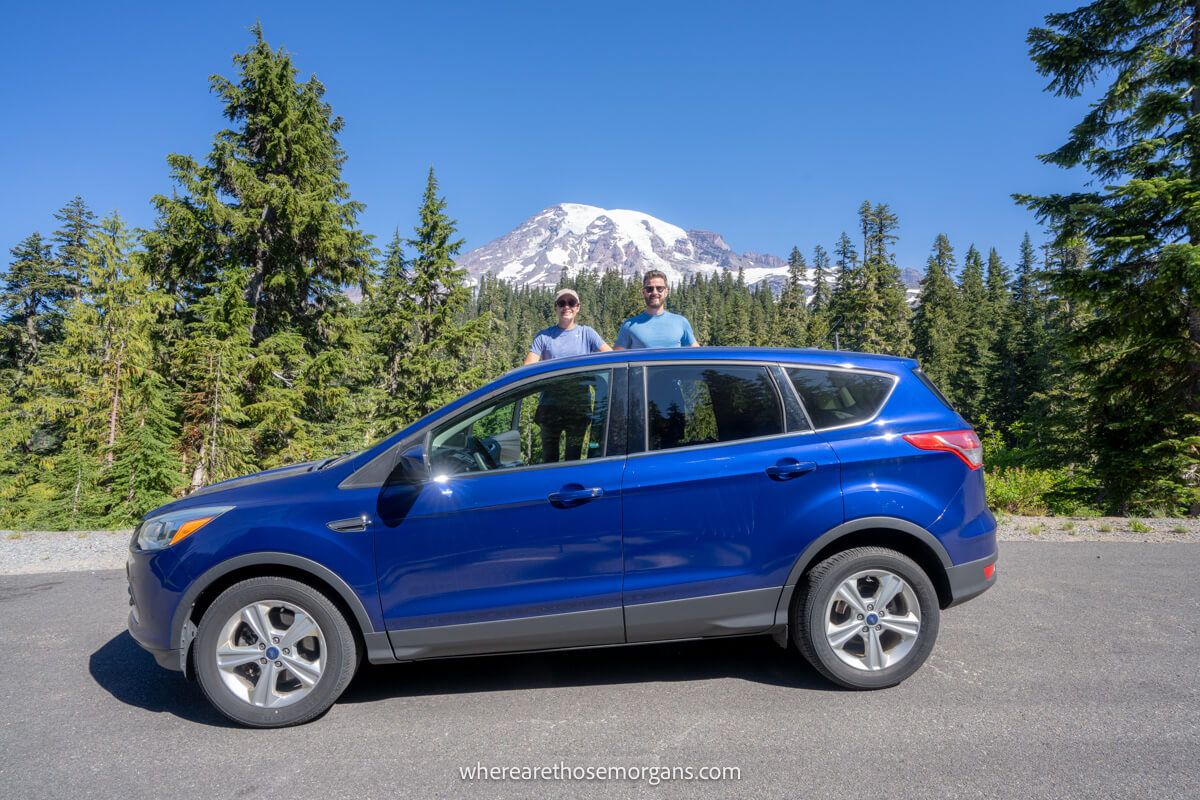
Since starting this blog in 2018, we’ve driven around the entire United States twice. It was incredible, and we learned very quickly that it pays to be prepared, which inspired us to write this road trip planning guide.
We’ve taken our years of experience and whittled it down to just 10 simple and easy-to-follow steps. We’ll highlight common mistakes we made, so you can avoid problems and help your road trip go as smoothly as possible. We’ve tailored this guide specifically to road trips in America, but the principles apply to other travel destinations too. Okay, let’s begin!
Note: Our content is reader supported and contains affiliate links. If you make a purchase through one of these links, we may earn a small commission at no extra cost to you and it helps us keep this site running.
1. Determine Trip Length
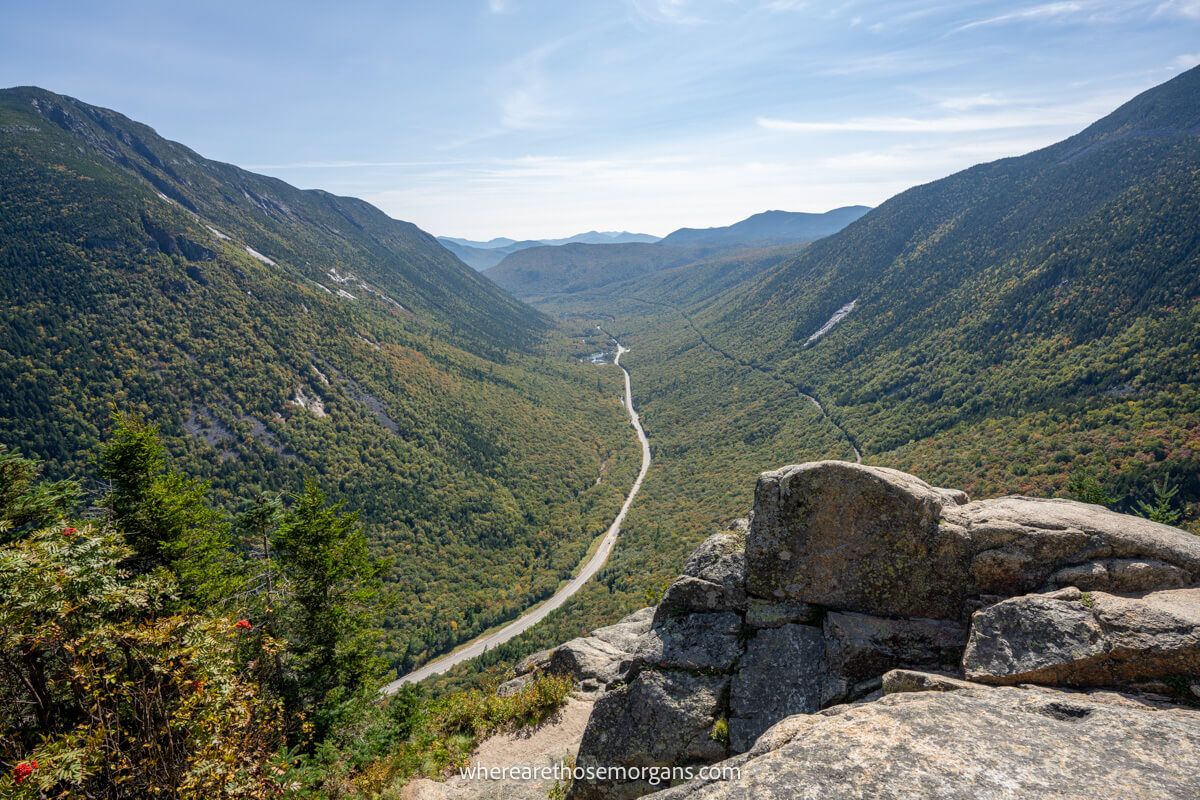
We think the first step in planning a road trip is to determine the length of time you have to travel. This decision will ultimately control every other step in the process so it’s one you need to carefully consider. While the amount of time may vary between people, the amount of time you spend driving everyday should be very similar.
From our experience, we think the perfect amount of time for a road trip is about 2 weeks if you plan to visit multiple states or countries. This way you minimize your driving time each day and you’ll be able to see more attractions. But if you only have a few days for your road trip, we’d suggest trying to cover a smaller driving distance. So ultimately you’ll cover less area, but you’ll see more things during your trip.
Long drive times are just not fun. In fact, if you spend many hours behind the wheel day after day, it becomes both exhausting and dangerous. We’ve found the best solution is to limit how many hours and miles you drive in a single day. During a road trip, you should limit your drive time to about 6 hours or 500 miles per day.
Let’s take a quick look at some math… If you assume an average speed of 70 MPH with an estimate of 500 miles driven per day, this would equate to just over 7.14 hours of actual drive time (time = distance / speed). Keep in mind you may be able to drive faster or slower. Plus you may also need to account for traffic, road work and stopping for gas or food. So if you plan to drive for 8 hours and then get caught in traffic for a few hours, your road trip has gotten off to a really bad start.
2. Pick A Road Trip Destination

After figuring out how much time you have, the next step is deciding where you want to go. Do you want to drive cross-country? Or do you just want to visit a specific region on a short weekend getaway? Do you see yourself soaking up spectacular scenery in national parks or would you prefer to take in famous city skylines like New York City?
The beauty of a road trip is flexibility. You won’t be limited and held back by train schedules or late flights. You can also just pull over on the side of the road if something catches your eye, especially if you limit the amount of hours you drive each day.
Here are a few of our guides to get you started:
- New England fall foliage road trip
- South Dakota road trip
- Mount Rushmore to Yellowstone
- Most scenic drives in America
We like to use Pinterest to create travel boards and save our bucket list places. But other social platforms work just as well. You can also check out our popular Travel Guidebooks which feature some of America’s most popular road trips.
3. Create A Budget
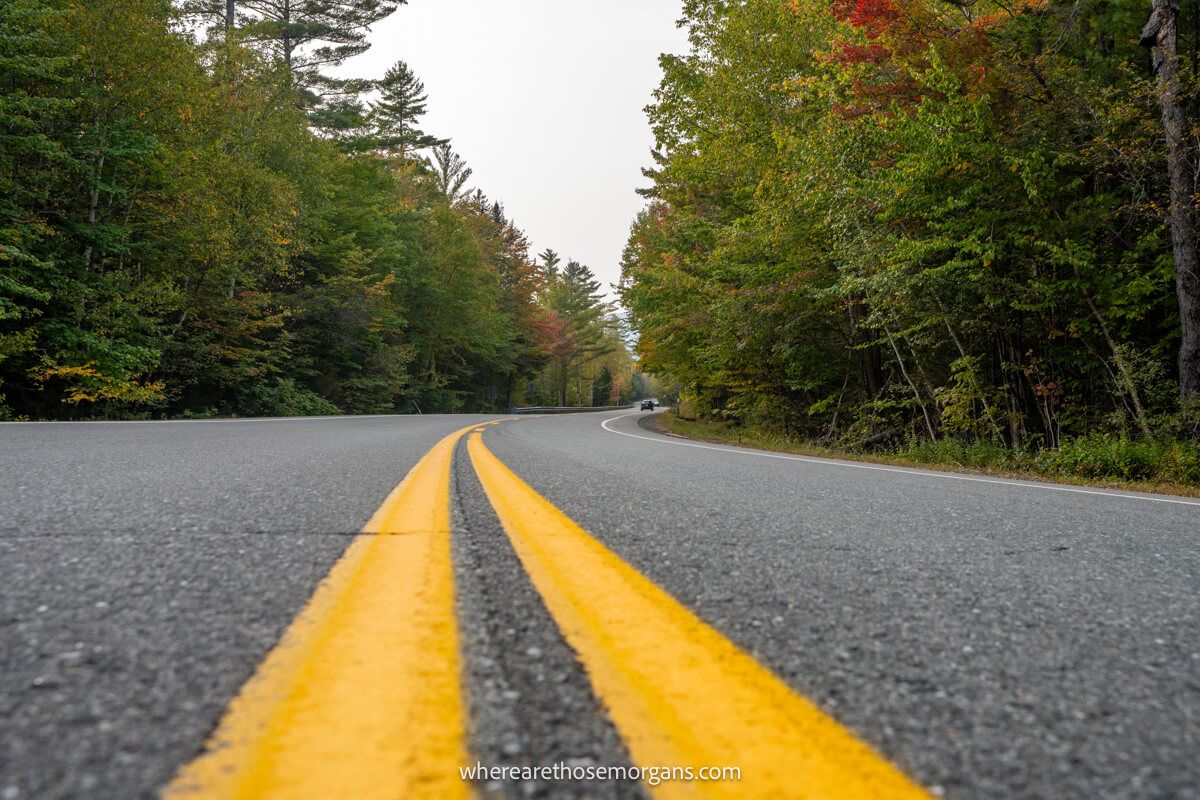
We like road trips because they can be a very cost effective way to travel if you plan well. But prices will greatly depend on your travel plans and style. So we highly recommend you create a road trip budget to avoid overspending. We recommend you create a budget because one of the best ways to minimize costs is to plan out your expenses.
Here’s what we typically account for when planning a road trip:
- Gas
- Accommodation (hotels, camping, etc.)
- Food and meal preparation
- Rental car or personal vehicle costs
- Major transportation (flights or trains if needed)
- Attractions
- Before trip costs (tent, cooler, hiking boots, etc.)
There are many ways to save money when budgeting for a road trip. For example, if you’re on a tight budget, you can choose to camp and make your own meals. Alternatively, if you have a healthy budget for luxurious accommodation and fine dining experiences, find the places you want to indulge and calculate potential costs.
We always begin by establishing a ballpark figure about how much we have to spend. For example, we’ll use a $3,000 budget for a 10 day road trip assuming you want to stay in hotels, visit a national park and a major city. Start by setting a road trip budget for each day. Once you’ve a set budget, try your best to maintain this target goal.
Let’s do some more math:
$3,000 total budget / 10 days = $300 allocated budget per day
Now if you’re traveling as a couple, this budgeted number is quite achievable. But if you’re road tripping as a family, this budget might not get you very far. Remember this $300 per day includes gas, food, accommodation, transportation, etc for everyday purchases.
We won’t sugar coat it because America can be very expensive to travel around. But here are a few numbers to aim for if you have a lower budget:
- Couples – $150-250/day
- Family – $300-400 / day
- Solo traveler – $80-100/day
Here are a few great tips to help you stay within your budget:
- Balance expensive days with cheap days – If you splashed out on luxury accommodation in Yellowstone National Park, then balance this high cost with lower costs of camping near Mount Rushmore.
- Avoid traveling during peak season – This is when demand is highest so prices for everything will be inflated and accommodation sells out very quickly.
- Price out potential costs for flights, rentals and hotels – If prices seem too high, you may need to rethink your budget or choose another starting point.
Travel Tip: If you’re planning to visit multiple US National Parks, buy an America the Beautiful Pass. For $80, this pass will cover your entry into the parks for an entire year.
4. Choose Your Vehicle
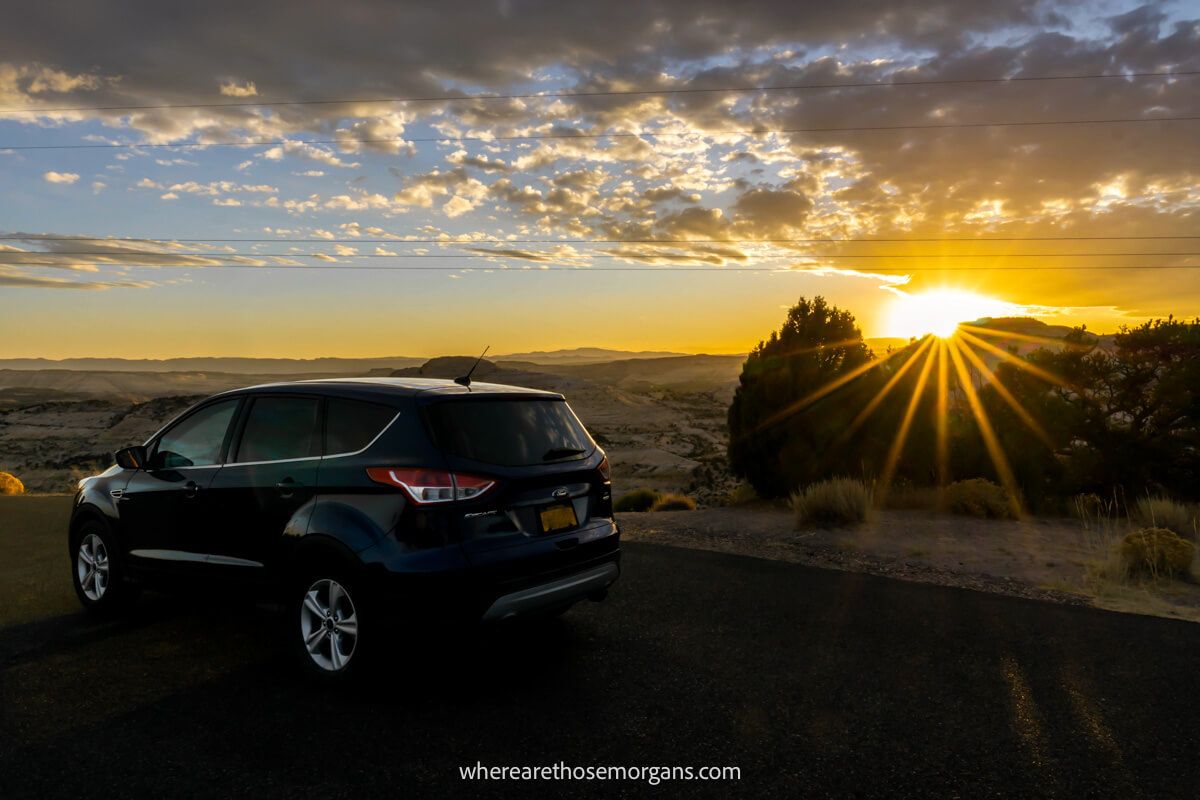
The next step in planning a road trip is identifying your road trip vehicle. This is how you’ll get from place to place during your trip. If you’re planning to use your own vehicle or campervan, this section may not pertain to you. However, we’ll discuss everything you need to do to prep your vehicle later in this guide (step # 10).
It’s important to think about vehicle size, gas mileage, comfort, safety specs, maintenance, reliability and 4WD when choosing a vehicle. If you plan to use your own vehicle, here are a few important considerations:
- Is your car in good enough condition to handle a road trip?
- Do you mind putting miles on your personal vehicle?
- Can you accept the wear and tear your vehicle will go through?
- Have you kept on top of your regular maintenance?
- Will you need to have service during your trip?
If you had any concerns about your vehicle when going through these questions, you should consider renting a vehicle for your road trip. We like both Rental Cars and Discover Cars to research because they compare many of the big brand names like Hertz, Enterprise, Alamo, Avis and Budget to find you the best deals.
Here are a few things to think about when renting a car for your road trip:
- Is there any availability for the vehicle you need?
- Can you drop the car off in a different location than you picked it up?
- Does your personal car insurance cover your rental?
- Are there any hidden costs?
Be sure to familiarize yourself with your rental when you initially pick it up at your starting point. Make sure the car is in good condition and you have the required paperwork.
Another option is to rent a campervan. If you go this route, make sure you’ll be comfortable driving a larger vehicle and think about what you need inside (kitchen, toilet or shower)? Here are popular rental companies:
- Cruise America – Offers many different sizes of class C motorhomes with all the features you need. The compact model fits 3 people while the large model fits up to 7 people.
- Escape Campervans – With 13 convenient locations, 24 hour roadside assistance and one-way options for convenience, they offer converted and fully equipped premium vans.
- Outdoorsy – RV, motorhome, trailer, or campervans from an extensive list of local providers along with 24/7 customer service and support services.
5. Plan A Route
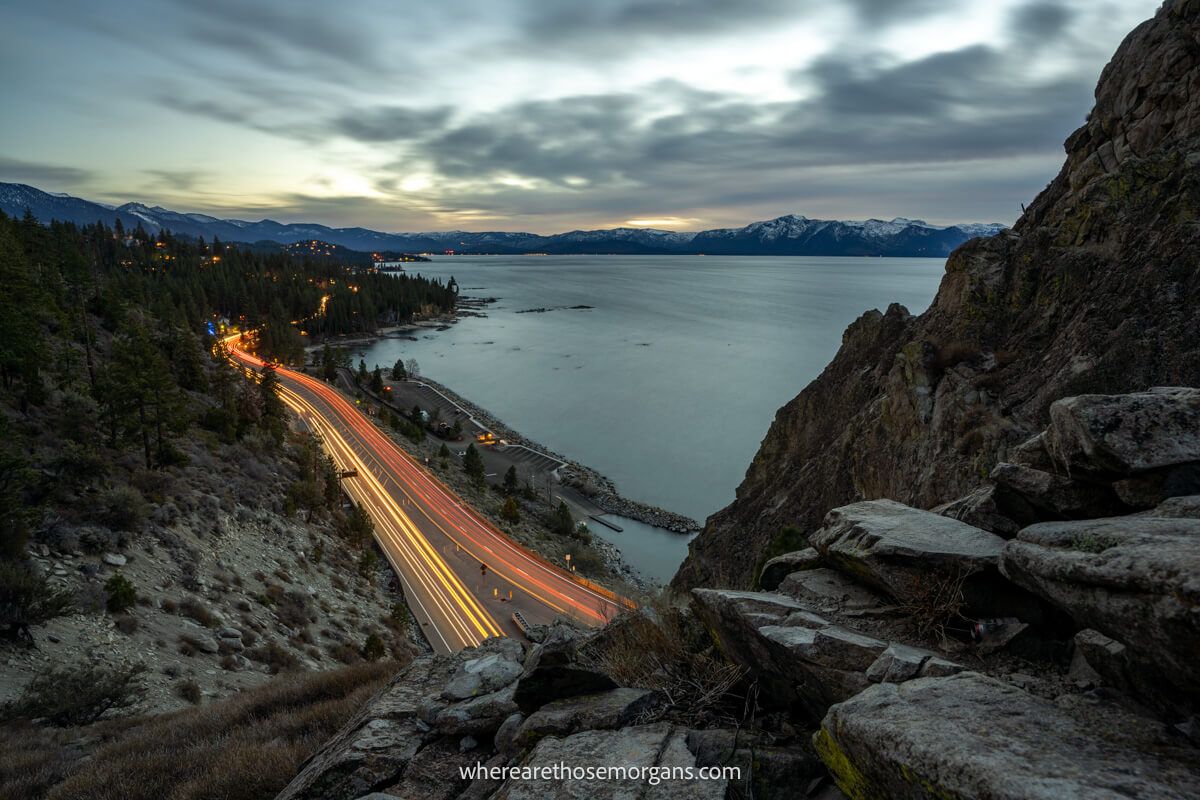
With your destination, budget and vehicle figured out, now it’s time to plan your exact route. We think the easiest way to go about this is by looking at a map. Begin by looking at your starting location (point A) and then end with your final destination (point B). Then all you have to do is decide what points of interest and attractions you want to visit along the way.
There are many free road trip planners available to help you plot the best route but we like using Google Maps for it’s simplicity.
Let’s use a road trip from San Francisco through Los Angeles and down to San Diego on the legendary California Pacific Coast Highway as an example. The total drive is about 550 miles and will take about 8 hours if you drove the entire route straight through. However, we’d recommend you take between 10-14 days to explore the small towns and scenic vistas along this beautiful stretch of open road.
Look at the map and plot the points you wish to visit including restaurants and accommodation if possible. By identifying road trip stops, you automatically break up the route and it’s easier to visualize your trip. Try to avoid long distances when possible. You might have to do a little more research for different towns along the coast, but it’s all part of the fun and you’ll be surprised how quickly you end up with a personalized road trip itinerary.
Here are a few tips for plotting a route:
- Pick a distance reasonable for your time frame and don’t try to cram in too much
- Break up long drives by adding in points of interest
- Always take the scenic byway over the highway as long as you have enough time
- Try not to plan every second because half the fun of a road trip is spontaneity
- Look for quirky roadside attractions (we love Atlas Obscura)
6. Find Accommodation
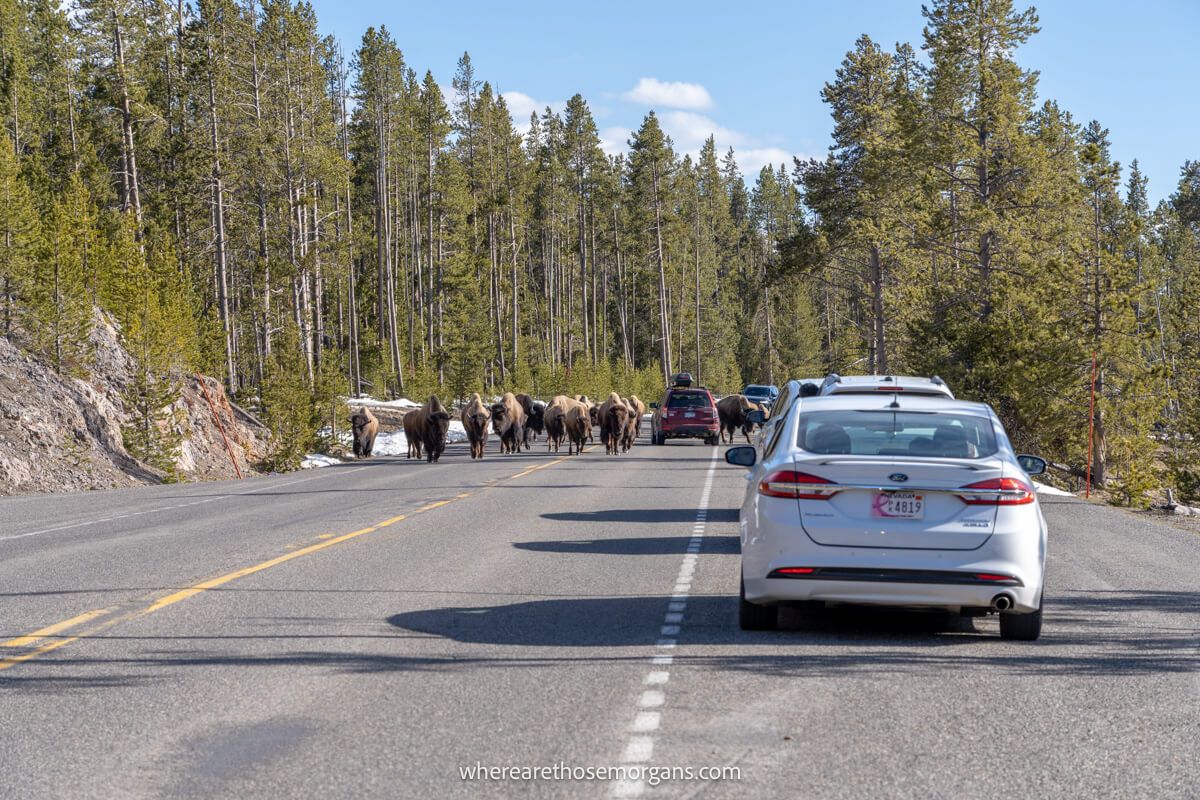
There are many options when to comes to accommodation during a road trip. You can book hotels, stay in designated campsites or use free dispersed locations. We often find a combination of camping and hotel stays depending on the destination works best for us.
The time of year will also matter because if you plan to travel during peak season, you’re going to have to get organized and book most of your accommodation well in advance. Conversely, if you travel during the low or shoulder seasons, you can usually book as you go.
We always book hotels with Booking.com. It’s our go to platform for anywhere we travel in the world because no other site compares in quality, options and value. We highly recommend their genius loyalty rewards program which will give you a 10-15% discount, free breakfasts, room upgrades and travel credit back for future bookings.
You can also search for different kinds of property types including hotels, apartments and more. We like to book apartments if we plan to stay in a destination for a longer period of time which helps to cut down on food costs. Other platforms include VRBO and Airbnb, but we find Booking typically has lower prices because they usually don’t charge an astronomical cleaning fee. Read our guide on how to book cheap hotels for more information.
Paid campsites typically range anywhere from $5-100/night with amenities such as showers, toilets, electricity, dump stations, picnic tables, etc. While free campsites are very basic and tend to be much more primitive.
Here are a few resources to help you find a campsite:
- The Dyrt PRO – Use our exclusive 30 day free trial to find both free and paid campsites or use Dyrt Alerts to snag a spot at a sold out campground nearby. We like to read campsite reviews from recent travelers.
- Recreation.gov – Find and reserve campsites at US National Parks, but they sell out quickly so book months in advance.
- Hipcamp – An online community offering unique stays with cabins, glampsites and RVs often called the Airbnb of the outdoors.
There are many areas in the US where you can disperse camp for free or a small fee. Unless otherwise stated, it’s legal to sleep in your vehicle on federally designated lands such as national forests, BLM land, national grasslands, wildlife management areas, some county parks and various trailheads. We always look for the brown and yellow signs indicating public land which lets us know we can disperse camp in the area. However, some states may require specific permits.
Travel Tip: It’s not permitted to sleep in your car or campervan within national park boundaries. You’ll be kicked out of the park if caught by a ranger. We’ve seen it happen multiple times so you may need a plan B.
Another option is the designated rest stops located along US interstate highways. Check this detailed list of interstate rest areas to see the overnight parking rules in your location. National chain truck stops such as Pilot Flying J and Travel Centers of America also offer overnight parking for larger vehicles with showers, food and toilets. We’d recommend you call ahead before planning to stay.
7. Finalize Your Itinerary
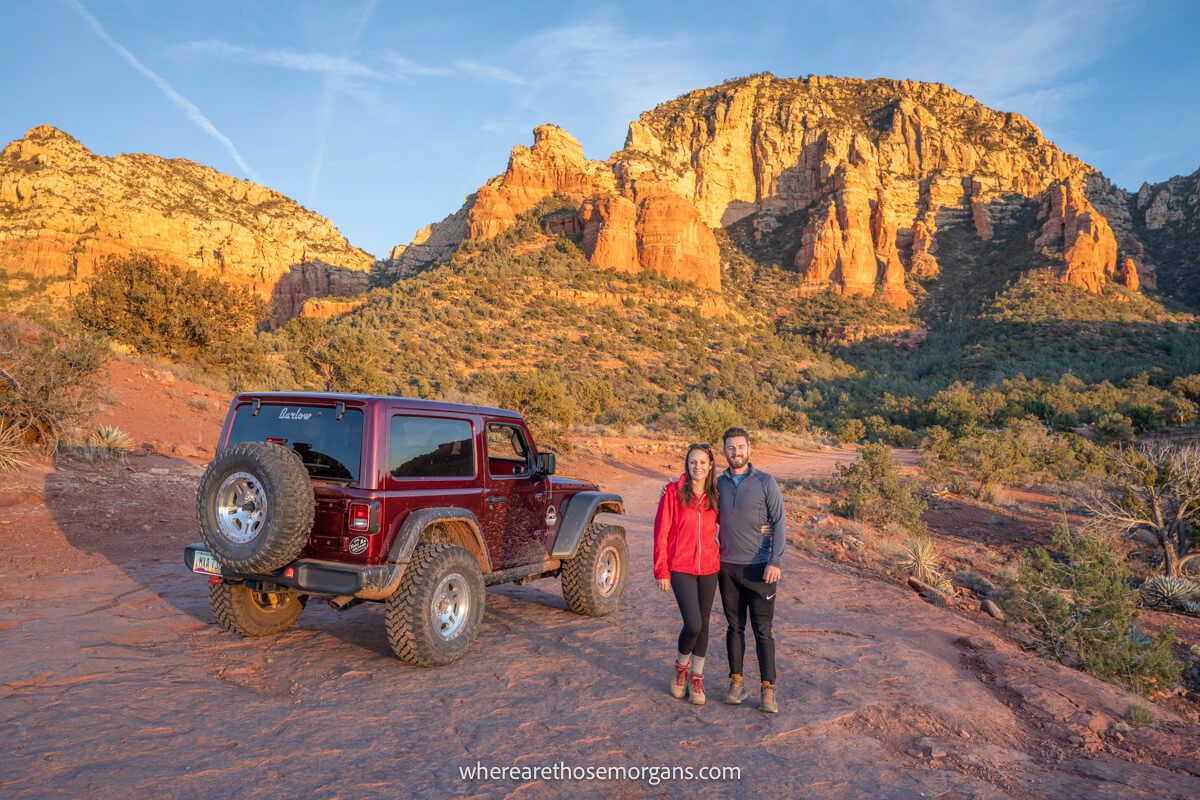
Now it’s time to take one final look at your road trip itinerary. Did you get a little too overzealous when originally planning? Are there any long drives you need to break up? Are there any bucket list activities, tours or attractions you might have missed?
If you’re planning to travel in peak season, we highly recommend booking tours or attractions you don’t want to miss. It may take a little spontaneity out of your road trip, but at least you’ll be guaranteed a spot. We always book with:
We’ve booked numerous activities with all 4 companies and always had a great time. The good news is they offer competitive prices and highlight deals throughout the year.
8. Use A Packing Checklist
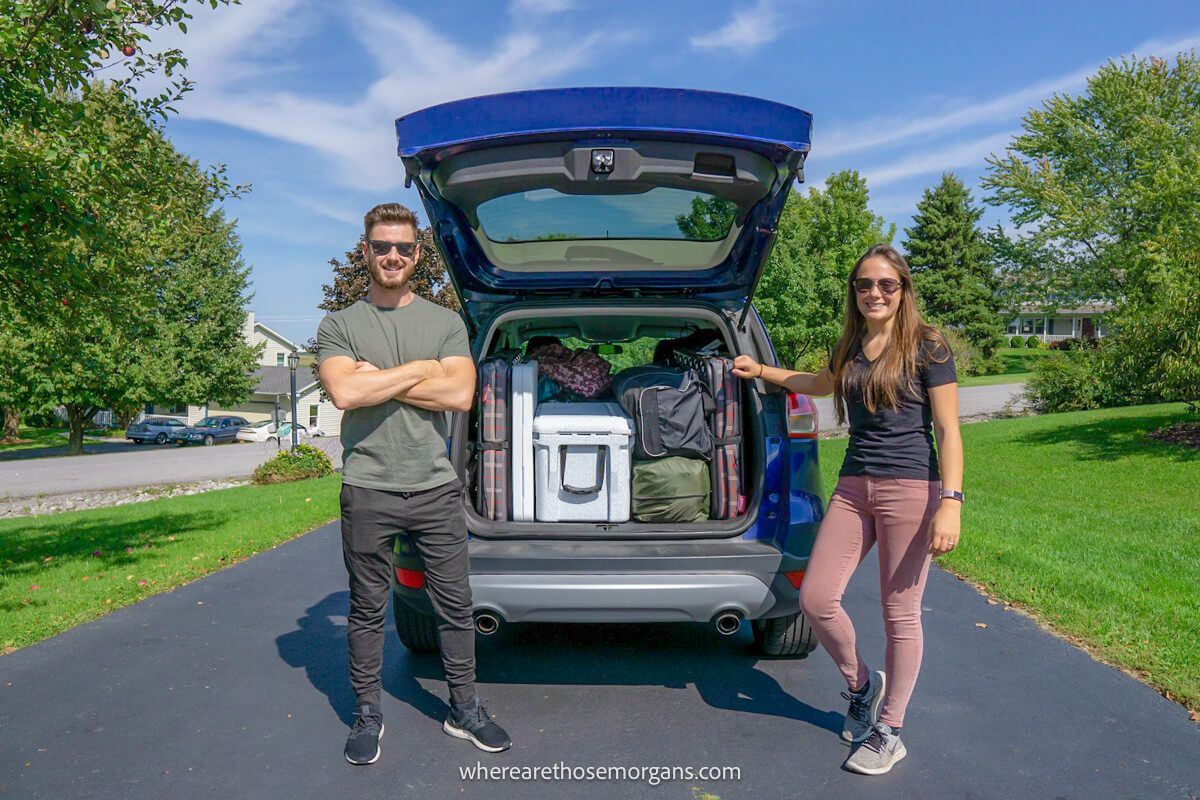
After all the planning, we think the key to a successful road trip is to pack like a minimalist. Nothing ruins a trip quicker than carrying around way too much gear. We won’t go over every single item you should bring in this guide, but we do in our road trip packing checklist. We’ll discuss what you need to bring in terms of food, clothes, safety and so much more.
But you should always have these road trip essentials on hand:
- Driver’s license
- Proof of insurance
- Vehicle registration
- Travel or health insurance
- Car manual
- First aid and roadside emergency kits
- Credit/debit cards, cash and coins
- Light source
We like to use a suitcase or travel duffel for our main bag that we always leave in the car and then bring a small travel backpack for any day trips. Packing cubes are also a life saver because you can stay very organized.
Travel Tip: When leaving items in your car for long periods or overnight, cover everything up with a blanket or sheet to avoid prying eyes. Darker colors such as blue or black work best.
9. Think About Your Meals
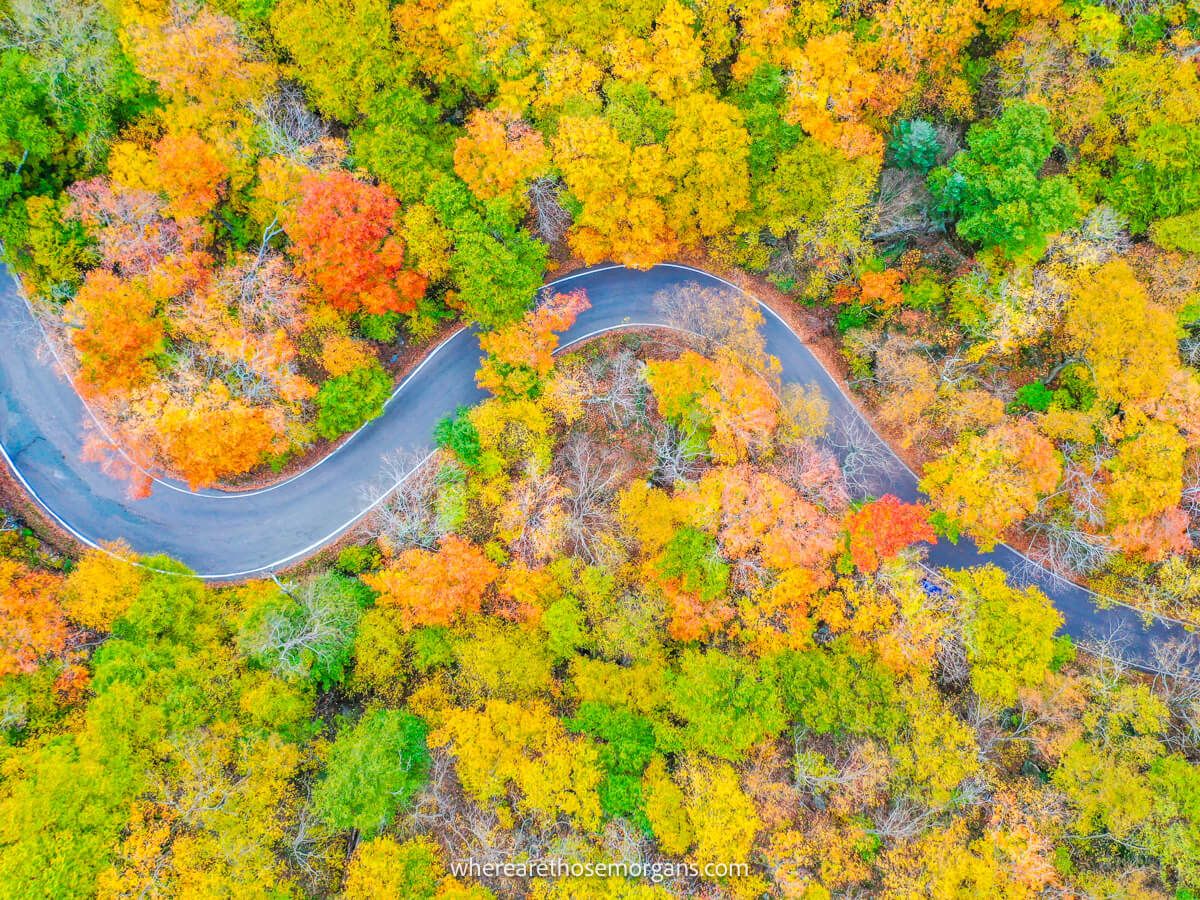
We’re almost on the home stretch, but now you need to think about your meals on the road. Are you planning to eat out at restaurants or do you plan to cook most of your own food?
When traveling in America, a significant portion of our budget goes to food because multiple restaurants day after day becomes quite expensive. We also start to feel very unhealthy eating out day after day. So we find a combination of eating out and making our own meals is the best way to stay healthy and maintain our budget during a road trip.
When traveling in rural areas, food can be extremely limited and this is where it comes in handy to plan ahead. As an example, the food options near the Grand Canyon South Rim are pretty lackluster. Which is very surprising considering it’s the Grand Canyon. But it’s important to know your options will be limited if you want to spend a few days hiking or get an early start when all restaurants in town are closed.
We like to plan and prepare meals early in the day because it helps us make healthier choices. For longer trips, we buy fresh fruit and veggies at a local market and then keep them in a small cooler in the back of our SUV. We always recommend carrying a few gallons of water in your vehicle for emergencies.
To keep food costs down, look for food trucks over sit down meals because it’s usually cheaper and faster if you’re short on time. Head to restaurants for lunch over dinner because the menu is often the same with special offers available. Foods grown locally are often cheaper so opt for the local dishes if possible.
Or you can plan to cook your meals, but you’ll have to account for extra time. Here are some easy camp stove meal ideas to get you started on what you can cook throughout the duration of your road trip.
Travel Tip: If you plan to visit a US national park, research food options before arriving. We’ve found many of the cafeterias and food options inside the parks are extremely overpriced and not that great. Look for restaurants in nearby towns or bring your own food for the day.
10. Prepare Your Vehicle
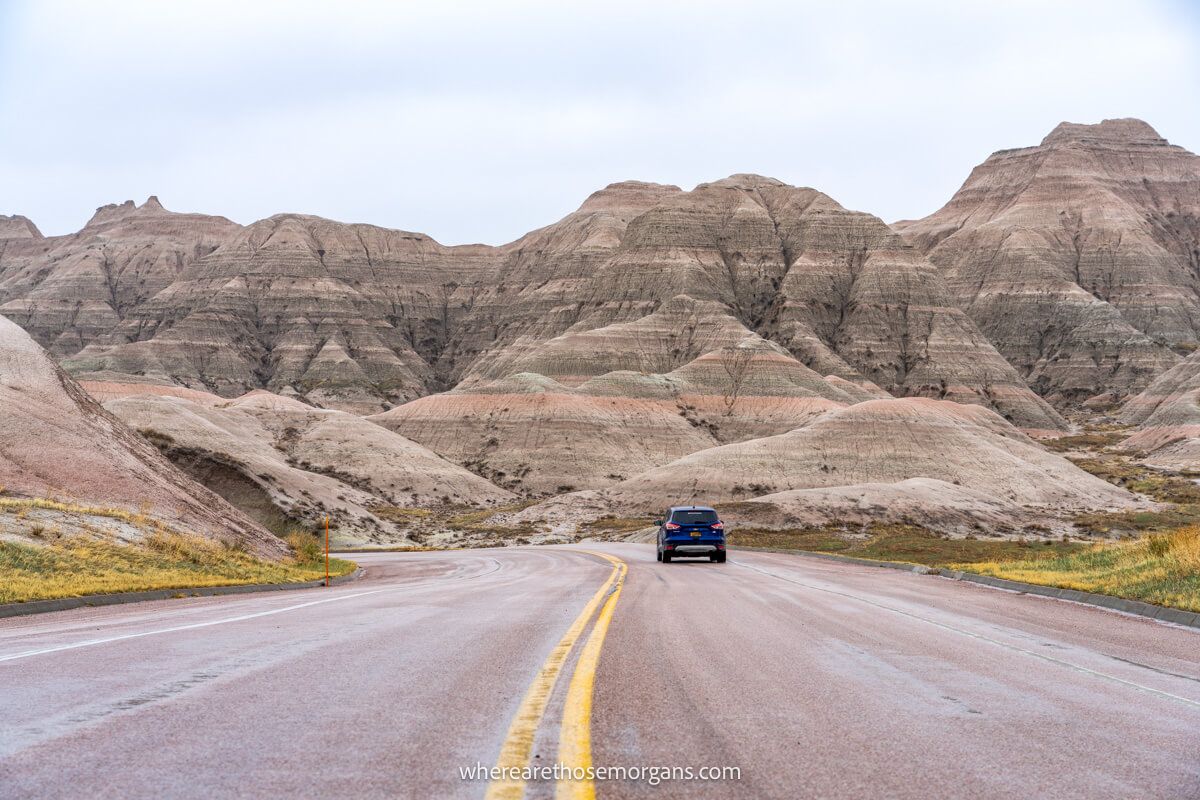
The last and final step in planning for a road trip is preparing your vehicle. While it’s not the most exciting, we think this is one of the most important steps and it will help you avoid potential problems on the road.
Prior to your road trip, check your vehicle for the following:
- Does the oil need to be changed?
- Is the vehicle inspection going to expire soon?
- Do you need to replace any fluids?
- Inspect the air filter, windshield wipers and spark plugs
- Inspect all lights and make sure they are properly functioning
- Do the tires have enough tread for the trip you plan to take?
- What about a spare tire and tools for changing a spare?
- Are you up to date on your car insurance and vehicle registration?
- Do you know where the car manual is located?
It’s better to identify problems prior your road trip before you’re in the middle of Death Valley with no cell service. You also should always keep an eye on the milage because you might need an oil chance depending on how far you drive. We have our SUV regularly serviced when driving around the states.
We highly recommend you have a plan if your car breaks down. If you’re planning a road trip in the United States, consider purchasing a AAA membership. As a member, you’ll receive 4 roadside service calls per year, battery replacement, free fuel delivery, replacement of a flat tire and more. They also provide free paper maps and many hotels accept AAA discounts so ask when checking in.
Travel Tip: Stash a little bit of extra cash away for emergency repairs. While road trips are fun, they do cause a lot of wear and tear to vehicles. But if you properly prepare, the price of these repairs won’t be a shock.
Best Road Trip Planning Apps
Free apps offer some of the best road trip planning tools. We recommend you download these apps before your trip:
- Waze – A subsidiary of Google providing satellite navigation software highlighting problems such as traffic, construction, police, crashes and even objects in the road in real time.
- Gas Buddy – This is a great option to find the cheapest gas station on your route. It focuses on finding real-time updates on gas prices so you won’t over pay at the pump.
- Roadside America – Find cool, quirky and local roadside attractions.
- Gaia GPS – The gold standard when it comes to navigation during a hike. Click the link for our special 10% discount.
- Google Docs – One of our favorite ways to stay organized when planning a road trip. We create a specific road trip file and list notes about our route plus drive times and interesting places. It can also be shared with multiple people.
Mistakes To Avoid When Planning
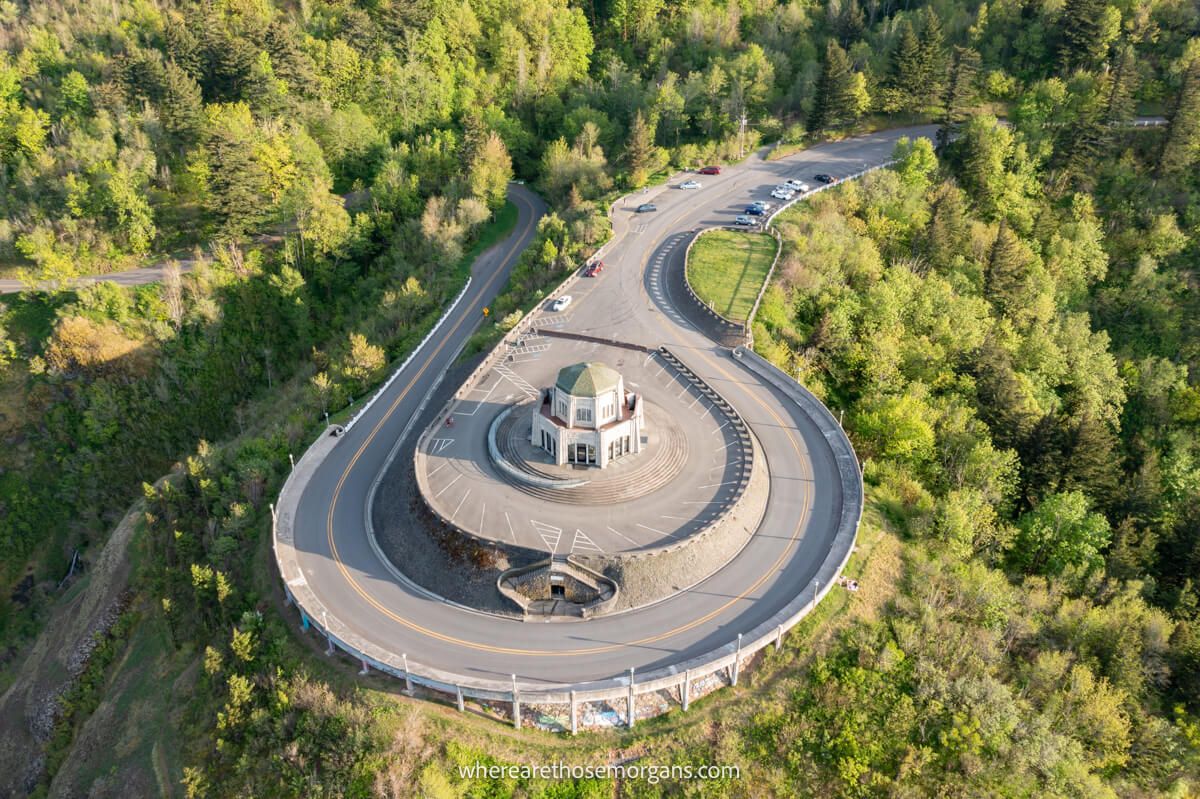
Get ready to start those engines because you’re officially ready to begin your road trip! We felt it was important to include a few common road trip mistakes to help make your trip the best it can be:
- Avoid driving long distances during rush hour. This will save so much time and frustration.
- Use Waze to keep an eye on your speed when driving in unfamiliar locations.
- Download any offline maps or routes you need while you still have cell service or wifi.
- Keep an eye on your gas when driving in rural areas. We keep our gas tank at least 1/4 full at all times.
- If you get tired from driving, stop for a short break. Walk around to stretch your legs and grab a coffee.
- Try to maintain a good sleep pattern (about 7 hours a night) and stay hydrated.
- The early bird gets the worm – start your day early to avoid crowds.
- Watch the sunset as much as possible.
- Don’t over plan. Be flexible for spontaneous road trip adventures!
The best piece of advice we can give you is to stay present and enjoy every moment. Car breakdowns and bad weather are bound to happen, but it’s the time you share with friends and family that’s priceless. Try not to let a bad day ruin your time. That horrible road trip experience will make for a funny story in the future.
More Popular Road Trips
- Las Vegas To Death Valley day trip
- What to see along the Kancamagus Highway
- Unique itineraries for 10 different Utah road trips
- Tips for driving from Zion to Bryce Canyon
- Salt Lake City To Yellowstone road trip planner
We hope our how to plan a road trip resource helps you enjoy every moment of your trip!
Please let us know if you have any questions in the comments below.
Happy Road Tripping,
Mark and Kristen
Enjoy this guide? Pin it for your trip!
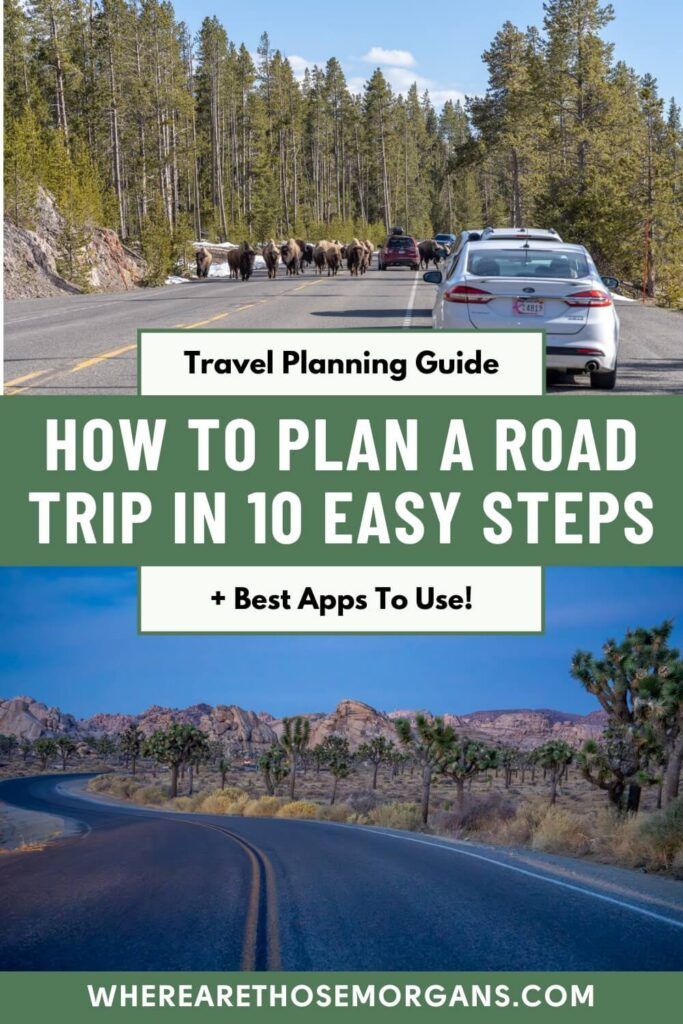
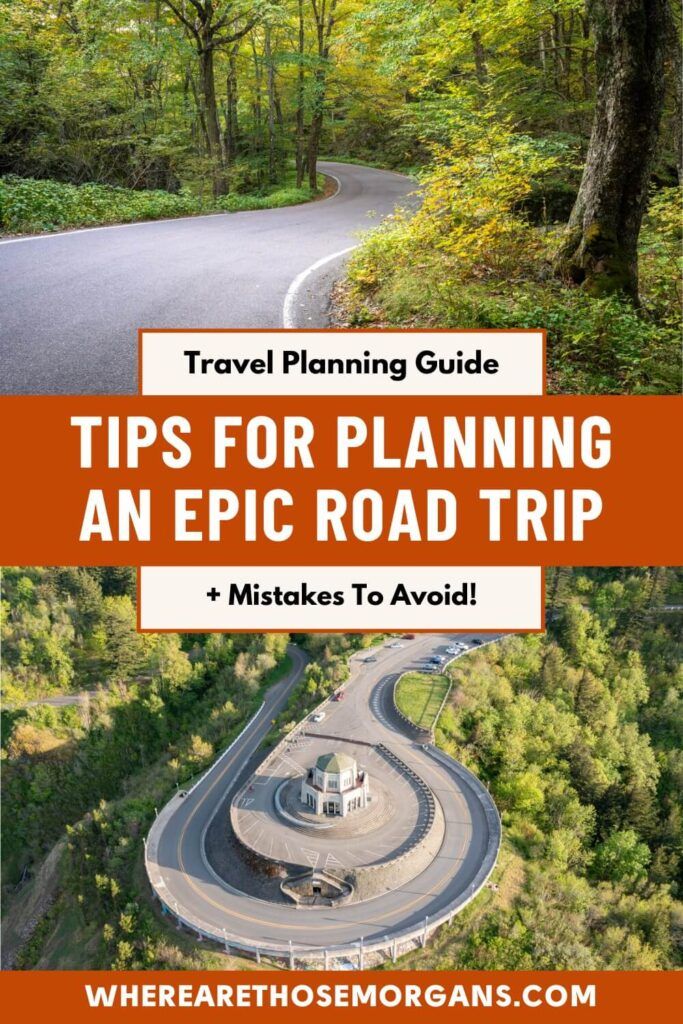
All Rights Reserved © Where Are Those Morgans, LLC. Republishing this article and/or any of its contents (text, photography, maps, graphics, etc.) in whole or in part is strictly prohibited.

